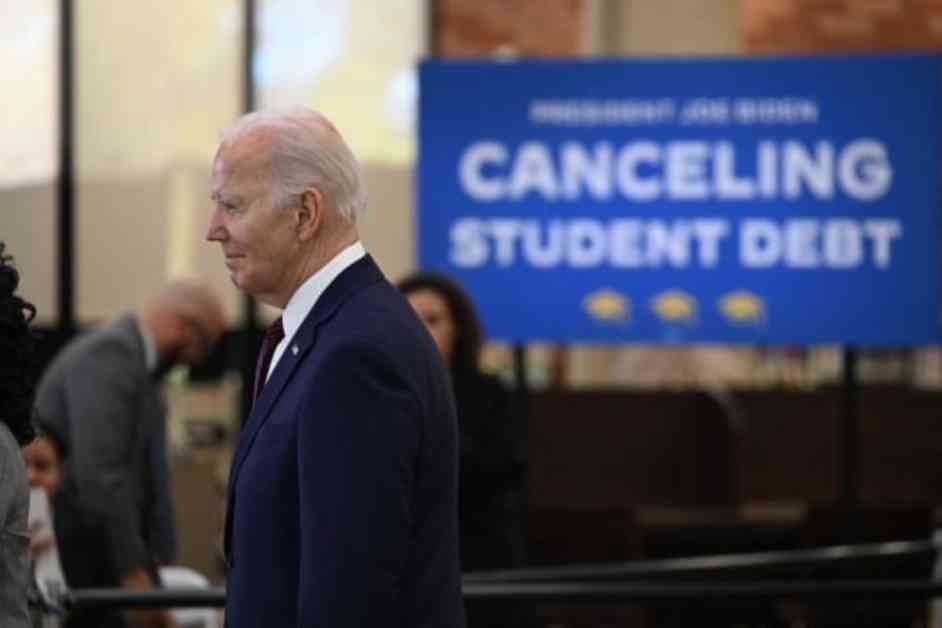The Biden administration’s efforts to provide relief to student loan borrowers have encountered a significant setback in the federal courts, throwing the future of the Student Aid for Valuable Education (SAVE) plan into uncertainty. As the administration seeks clarity from the Supreme Court, borrowers are left in limbo, unsure of what the future holds for their student loan repayment.
Challenges in the Court System
The recent decision by the U.S. Court of Appeals for the Eighth Circuit to uphold an earlier order halting the implementation of the SAVE plan has created confusion and concern among borrowers. The court’s one-sentence order has put a temporary halt on the forgiveness of loans and changes to repayment terms, leaving millions of borrowers in a state of uncertainty. This ruling has raised questions about the Education Department’s authority to provide relief to student loan borrowers and has sparked a legal battle that is likely to escalate to the Supreme Court.
Legal Battle Over SAVE
The legal challenges to the SAVE plan have been led by Missouri and six other Republican-led states, who argue that the plan exceeds the department’s authority and resembles a previous debt-relief plan that was struck down by the Supreme Court last year. These states are among two groups suing the Biden administration over the SAVE plan, with the other lawsuit led by Alaska. While the Alaska-led lawsuit allowed the SAVE plan to move forward, the Eighth Circuit’s decision has nullified that order, further complicating the situation for borrowers.
Impact on Borrowers
The injunction issued by the Eighth Circuit has placed nearly eight million borrowers enrolled in the SAVE plan in forbearance, effectively pausing their payments while the legal battle continues. This has caused significant confusion and uncertainty among borrowers, as they are unable to access the benefits of the plan that were designed to make payments more affordable and provide a pathway to loan forgiveness. Additionally, the court’s decision has prevented the Education Department from implementing provisions to lower payments for borrowers on the plan, potentially leading to higher payments for these individuals.
Broader Implications
Beyond the immediate impact on the SAVE plan, the court’s ruling also has broader implications for borrowers on income-contingent or income-driven repayment plans dating back 30 years. The Biden administration has argued that the injunction extends to all income-contingent repayment plans, not just SAVE, affecting approximately 10.5 million borrowers with loans totaling $582.8 billion. This has left borrowers who have been making payments based on the terms of these plans uncertain about the future of their loan forgiveness eligibility.
Efforts to Clarify the Injunction
In response to the broad scope of the injunction, lawyers for the Biden administration have sought to clarify and narrow its impact. They have argued that the injunction could prevent borrowers from accessing loan forgiveness under income-driven repayment plans, creating confusion and disrupting the expectations of borrowers who have been making payments for years. Despite these efforts, the Eighth Circuit has declined to provide clarification, prompting the administration to appeal to the Supreme Court for resolution.
Challenges for Borrowers
The uncertainty surrounding the court’s ruling and the future of the SAVE plan has left borrowers grappling with difficult decisions. Betsy Mayotte, founder of the Institute of Student Loan Advisors, has noted the challenges faced by borrowers who have made financial decisions based on the terms of the plan, such as buying homes and planning their finances around lower payments. This unprecedented situation has left borrowers unsure of how to proceed and has created significant stress and anxiety among those affected.
Legal and Ethical Debates
The legal challenges to the SAVE plan have sparked debates about the Education Department’s authority to provide loan forgiveness and relief to borrowers. Critics argue that the plan represents an overreach of the department’s powers and could set a dangerous precedent for future debt-relief programs. On the other hand, supporters of the plan contend that it is a necessary measure to provide much-needed relief to borrowers struggling with student loan debt. The differing perspectives on the legality and ethics of the SAVE plan highlight the complex nature of student loan forgiveness and repayment policies.
Future Implications
As the legal battle over the SAVE plan unfolds, the future of student loan forgiveness and repayment remains uncertain. The Supreme Court’s decision on the injunction will have far-reaching consequences for millions of borrowers who are enrolled in income-driven repayment plans. The outcome of this case will not only determine the fate of the SAVE plan but also set a precedent for how the Education Department can provide relief to student loan borrowers in the future. Borrowers and advocates alike are closely watching this case as it unfolds, hoping for a resolution that will provide clarity and relief to those affected.
In conclusion, the court’s ruling on the SAVE plan has created significant uncertainty and confusion for millions of student loan borrowers. As the legal battle escalates to the Supreme Court, the future of student loan forgiveness and repayment hangs in the balance. Borrowers are left in limbo, unsure of what the outcome will be and how it will affect their financial futures. The implications of this case extend far beyond the immediate impact on the SAVE plan, raising broader questions about the Education Department’s authority to provide relief to student loan borrowers. As the legal and ethical debates continue, borrowers and advocates are hopeful for a resolution that will provide clarity and relief to those affected by the ongoing challenges in the student loan industry.
